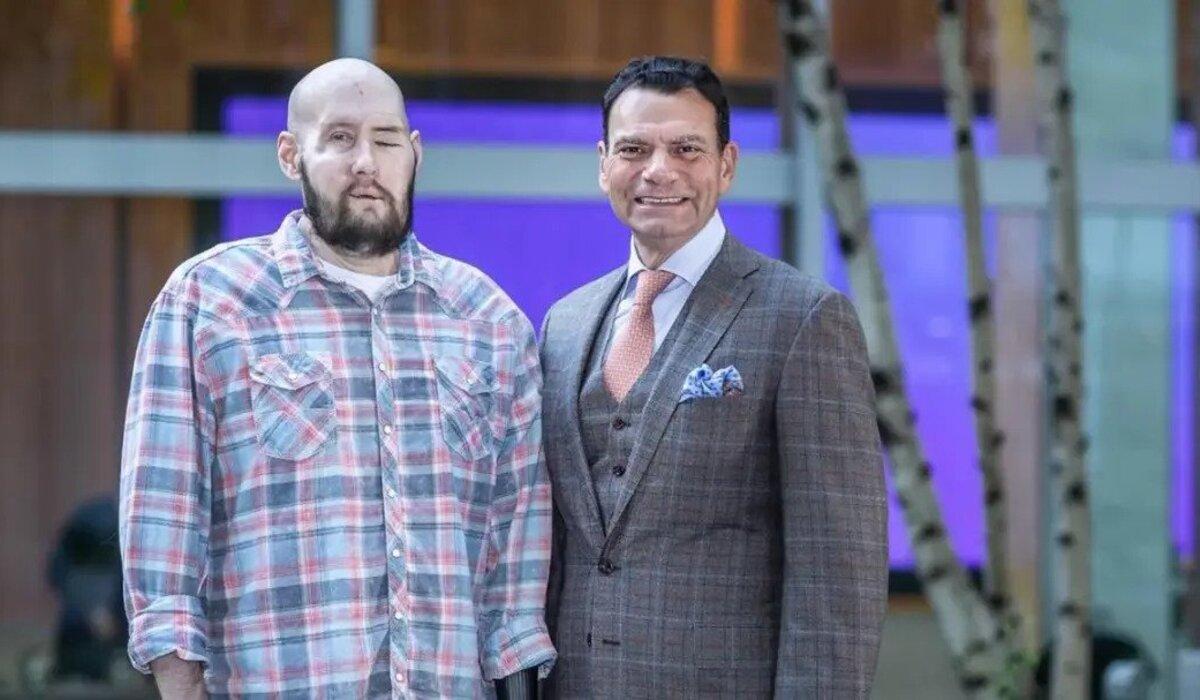In a groundbreaking medical feat, surgeons at NYU Langone Health achieved the world’s first complete eye transplant, accompanied by a partial face transplant, for Aaron James, a military veteran who survived a life-altering accident. The accident, involving a 7,200-volt electric shock while James was on duty as a high-voltage lineman, resulted in the loss of his left eye, left arm above the elbow, nose, lips, front teeth, part of his face, and chin down to the bone.
The complexity of this surgical milestone lay in its unprecedented nature. The surgical team meticulously planned the procedure for nearly two years, focusing on the intricate evaluation of the process. James became a registered recipient for a new face and eye in early 2023 through the United Network for Organ Sharing (UNOS). The transplant, executed on May 27, 2023, engaged a team of over 140 healthcare professionals in a rare dual transplant.
The post-operative phase brought both hope and uncertainty. While the potential recovery of James’s vision remains uncertain, there are positive indications. The transplanted left eye displayed promising signs of health, notably in its circulation to the retina, a critical component responsible for visual perception. The remarkable progress exceeded initial expectations, showing viable prospects five months after the surgery, which initially aimed for the eye’s survival for at least 90 days.
“The progress we’ve seen with the eye is exceptional, especially considering that we have a viable cornea paired with a retina showing great blood flow five months after the procedure. This far exceeds our initial expectations, given our initial hope was that the eye would survive at least 90 days,” said Bruce E. Gelb, MD, a transplant surgeon at the NYU Langone Transplant Institute.
The inherent complexity of eye transplants was highlighted. While corneal transplants are relatively common in the United States, complete eye transplants present considerable challenges due to the intricacy of the eye, nerve regeneration difficulties, immune rejection concerns, and the crucial need for proper blood flow to the retina.
“The human eye is intricately connected to the brain through the optic nerve, part of the central nervous system and responsible for transmitting visual information to the brain,” added the release.
A significant challenge lies in reconnecting the optic nerve, a vital link between the eye and the brain for transmitting visual information. The surgical team sought to address this hurdle by integrating adult stem cells acquired from donor bone marrow into the transplant. Stem cell injections into James’s optic nerve during the surgery aimed to facilitate nerve regeneration, offering a potential path toward restored vision in the future.
“This is the first attempt of injecting adult stem cells into a human optic nerve during a transplant in the hopes of enhancing nerve regeneration. We chose to use CD34-positive stem cells which have been shown to harbor the potential to replace damaged cells and neuroprotective properties,” explained Samer Al-Homsi, MD, MBA, executive director of the Transplantation and Cellular Therapy Center and professor in the Department of Medicine at NYU Langone.
This unprecedented medical procedure is not just a milestone but a beacon of hope for individuals seeking to regain their sight. Dr. Eduardo D. Rodriguez, leading the surgical efforts, perceives this achievement as a pivotal step toward the restoration of vision, opening doors for further advancements in the field of ocular transplants.
“We’ve made one major step forward and have paved the way for the next chapter to restore vision,” said Eduardo D. Rodriguez, who led the surgical procedure.

